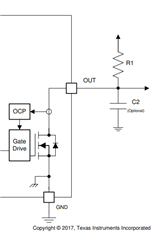Tool/software:
Hi,
Could you tell us how the switching characteristics on the datasheet vary between TR (Output rise time) and TF (Output fall time)?

BR,
Taku Murayama
This thread has been locked.
If you have a related question, please click the "Ask a related question" button in the top right corner. The newly created question will be automatically linked to this question.
Tool/software:
Hi,
Could you tell us how the switching characteristics on the datasheet vary between TR (Output rise time) and TF (Output fall time)?

BR,
Taku Murayama
Hello Taku-san,
Thanks for posting to the sensors forum!
The DRV5013-Q1 is an open drain output device who's output rise time is mainly dependent on the pullup resistor and any capacitance on the output line, these values will be the main contributors to the time constants, the variability will also mostly come from any tolerances that those passive components may have but typically a good rule of thumb is to use 3*RC in order to get an estimate of what your 10%-90% rise time will be. If they want to get a closer estimate they can include any parasitics that may be on their board.
The fall time is dependent on the R_ds(on) characteristics of the FET that pulls the output down to ground along with the output capacitance on the board. The R_ds(on) is something that we do spec on the datasheet and provide a max value for so if your customer would like to calculate the fall time based on their board they could use this.


If they have a target rise and fall time they should be able to calculate what the ideal component values should be. Let me know if there are any questions and I can help out with this.
Best,
Isaac